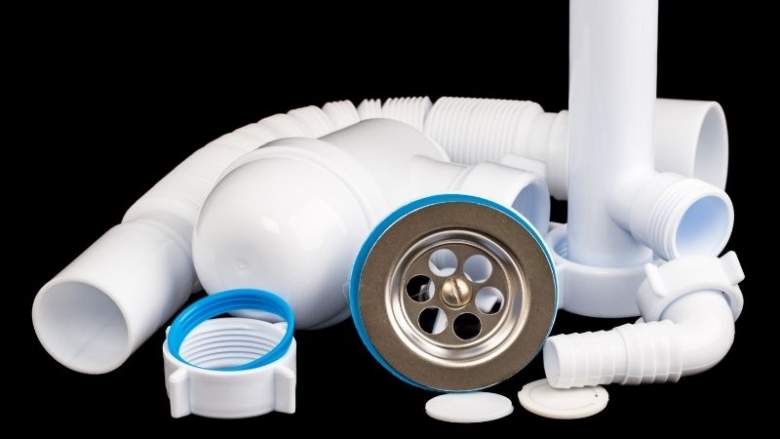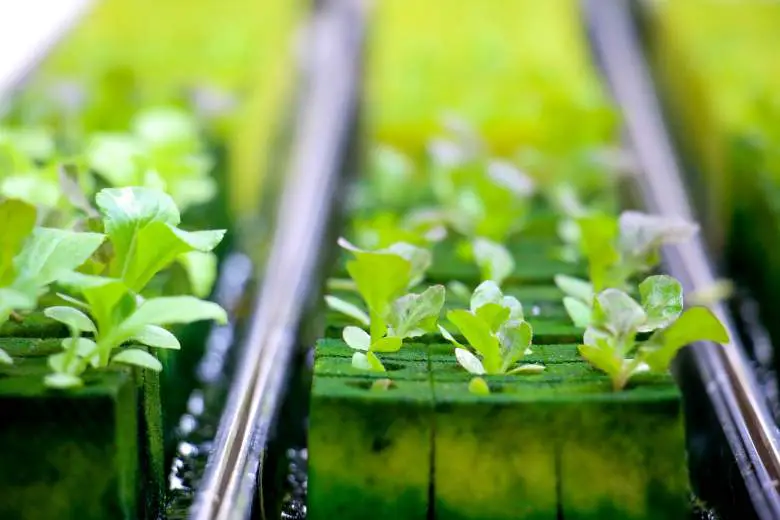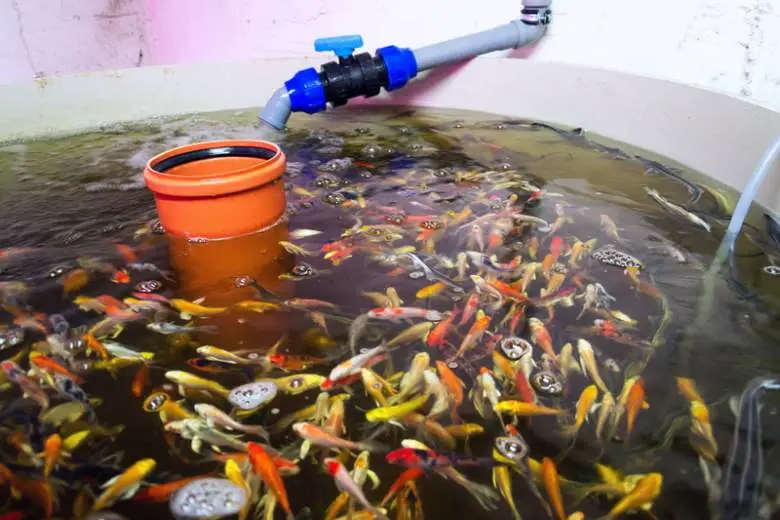When building an aquaponics system, you need a way to control the water levels in your grow bed. Reasons for this are it stops roots from rotting from standing in too much water, and as the water continually flows, it prevents overflowing of your grow bed and thus pumping all the water from your system and killing your fish.
A bell siphon is the top means of controlling the water level in your grow bed, and it serves many purposes. With this in mind, you can see the best 5 reasons to use a bell siphon in aquaponics. Here, you will see bell siphons help with automatic processes; they offer simplicity while being reliable; you have maximum efficiency, and they control your water. All this adds up to the top reason of enabling more aeration to your crops for healthy growth.
What Is A Bell Siphon?
Before looking at the top reasons for using such a device in your aquaponics system, it is good to know what these devices are and how they work.
Here, you can find a breakdown of all you need to know about using a bell siphon.
A bell siphon is a simple device that can successfully and accurately control the water flow in aquaponic and hydroponic systems with no need for human interaction.
When the water level in the grow bed reaches a specified level, the siphon automatically drains the water. As the extra water is exhausted, the siphon maintains a minimum water level, so the bed never dries out.
During the flood and drain cycle, bell siphons eliminate the need to turn your pump on and off manually. The flood and drain cycles increase oxygenation and aid in the absorption of nutrients by the plants. As a result, the cycle is critical in guaranteeing the plants’ healthy growth and development.
How Do Bell Siphons Work?
Many people are perplexed by the concept of a bell siphon because there are no motorized components inside. The bell siphon works based on a simple mechanism that exploits the use of gravity and pressure.
A water pump will fill your depleted grow bed with water to a predetermined level. The height of your standpipe inside the siphon housing determines the level.
Water flows into the fish tank or sump tank beneath your grow bed through the reducer at the top of the standpipe, where the pull of low pressure causes the water to drain from your grow bed.
Water builds up inside the bell as water slowly drains out of the standpipe, pushing air out via the standpipe. As a result, the bell’s internal pressure gradually decreases.
Because of low bell pressure, there is a pressure difference between the bell and the atmosphere, forcing your bell siphon to fire (start draining). As a result, the siphon rapidly forces the water out and pours it through the standpipe at a much higher pressure until the water level reaches the grow bed’s base level set by the bottom of the drainpipe.
As your water level nears the bottom of the siphon pipe, air enters the bell through the openings at the bottom, relieving the pressure difference between the bell and the atmosphere and causing the siphon to break and the water drain to come to a halt.
Water will pour into the grow bed while the pump continues to work, filling it to your desired level.
Once the water reaches this level, it triggers the siphon; thus, flooding and draining cycles continue if your water pump runs.
Your system will never overflow or run out of water if used correctly and without difficulties. The best part is that everything is automated, and you don’t have to touch your bell siphon except to clean it now and then.
5 Reasons to Use a Bell Siphon for Aquaponics
Here you can find the five most important reasons to use a Bell Siphon in your aquaponics system.
While the explanation may be brief, the impact on your system, fish and your crops is going to be considerable.
1# Lots of Root Aeration for Plant Roots
You’ll find an improvement in oxygenation of the aquaponic plants’ roots with a bell siphon. The complete roots length face exposure to air regularly thanks to the bell siphon draining out the water.
It increases the oxygen intake, helping plants grow and help them stay healthy. The endless flood and drain cycle ensure the plants are hydrated and obtain all the essential nutrients and oxygen they need.
2# Maximum Automated Efficiency
Bell siphons allow your aquaponic system to operate at peak efficiency because the procedure is automated.
To get the optimal water pump flow rate, you must conduct a few trials to ensure you grow bed fills at the optimum time. Too fast and your plants will remain too wet, and too slow will leave them without a chance to absorb any nutrients.
However, it can take a bit of trial and error, yet once you find the perfect flow rate into and out of your grow bed, the bell siphon works wonders and will deliver a steady flood and drain cycle at regular intervals.
3# Reliable and Simple
Bell siphons are easy to maintain and keep running. All that is required is a bit of routine cleaning now and again and some troubleshooting following installation.
Bell siphons are also extremely easy to set up and do not require electricity. In the most basic form, they are two sections of tubing of different diameters. You can purchase bell siphon kits with all the tank fittings, or you can easily make your own with very few components.
4# Automatic Processes Without Power
Bell siphons work automatically using concepts taken from physics. For gardens of any size, the automated process makes it easier on labor requirements, purchasing parts to conduct this task. As they are not powered, a bell siphon works without affecting your electricity consumption.
5# Consistent Water Movement
Bell siphons enable continuous circulation of water to and from your grow bed. With this regular flow in-and outflow of water, it improves oxygen levels in the water, and what oxygen can reach plant roots as it is sucked in through the gravel by the draining water.
You won’t face any water stagnation, and thus there is no chance of bacteria, mold, insects, and pests. The water flow offers enhanced support for the optimal growth of your plants.
Components of a Bell Siphon
If you wish to build your bell siphon to reap all the benefits, it is handy to understand each component.
You’ll find there aren’t many parts of a bell siphon, and the number total seven. However, these make up two key components: the inner standpipe, the siphon pipe, and enclosed in the media guard.
Bell Capsule
The bell cap is essential. As water overflows into the standpipe, low pressure builds under the bell cap, forcing the water out faster until air enters the bell when the water level exceeds the slits at the base of the siphon pipe.
Reducer
You will install the reducer on the top of the standpipe, which aids in creating the siphon function in the discharge pipe. A reducer with a 2:1 ratio has proven to be the best – for instance, if your standpipe is 1 inch in diameter, a reducer with a 2-inch diameter to 1-inch reduction at the bottom is ideal.
Pipe Siphon
The siphon pipe acts as a barrier between the siphon and the atmosphere, keeping air from entering inside. It enables the siphon to generate negative pressure, creating a vacuum and keeping water flowing in the siphon.
Once the grow bed drains, the siphon pipe has slits at the bottom to enable air into the system and stop the siphon when pressure rises. It is vital to remember the diameter of your siphon pipe should be twice that of the reducer.
Pipe Stand
The standpipe is installed within the siphon pipe and serves as the discharge pipe, controlling the maximum water level in the grow bed. It is the link between the bulkhead and the reducer. When the water reaches the top of the standpipe, it rushes out through it.
Media Guard
The media guard keeps rocks and other debris out of the siphon pipe while enabling water to flow readily in and out of the standpipe. The guard prevents the grow bed’s support media from clogging the standpipe and bell siphon.
Bulkhead
The bulkhead allows water to drain through the standpipe without seeping back into the siphon. It also serves as a support for the standpipe in the grow bed.
Drainpipe
The outlet pipe, also known as the drainpipe, runs from the bottom of the bulkhead into the fish tank.
How to Build a DIY Bell Siphon
Here you can find the simple steps on how to build a practical bell siphon for your garden. It is worth noting; you can use these in any grow bed system, from Dutch buckets up to an extensive flood and drain system.
Bell siphons are not restricted to aquaponics and can as quickly be used in your hydroponic systems as well.
Step 1:
Drill a hole in your grow bed, and then install a grommet seal before you install the standpipe. Check that the drill bit you’re using is the proper size for the PVC fittings you’re using.
Step 2:
Insert the standpipe into the top of the grommet, and then position it, so the top of the standpipe is level with the bottom of the bell cap on the bell siphon.
Step 3:
Insert a 90-degree elbow into the bottom half of the standpipe below the grow bed to connect the drain to the fish tank.
Step 4:
Surround the standpipe with your growing media. Fill your grow bed to the height of the top half of the standpipe with growing media. Fill your grow bed with water to see if your grow media is high enough as this will reveal any low regions.
Step 5:
Place the fish tank underneath your grow bed and fill it with water once your grow bed has sucked up all the rinse water.
Step 6:
Place the pump and the pipes into the fish tank and ensure everything is stable.
Step 7:
Make sure your siphon works correctly by turning on the pump.
Step 8:
After you’ve finished setting up and cycling your system, you can start adding fish and growing crops.
Bell Siphon Size
One consideration when using a bell siphon is the size. Main siphon components should be equivalent or slightly larger than water input components.
Imagine a high volume of water entering your grow bed through a 40 mm pipe, yet your standpipe and outflow are just 0.78 inches (20 mm).
Your pipe would lead to the overflow of water, and your grow bed overflowed. The 1.57-inch (40 mm) outflow can easily manage the water that the 20 mm pipe may put into your grow bed, and it wouldn’t overflow.
In deciding the size of your bell siphon, you must consider the amount of water flowing to your grow bed, your pump’s capacity, the speed of the water flow, and the number of flood and drain cycles each hour you want.
Troubleshooting Bell Siphon Problems
You won’t find many issues with a bell siphon, but here are a couple of things you could see when using them in your aquaponics system.
Problem: No Trigger
The bell siphon will not trigger, resulting in a high-water level in the grow bed that may overflow but no water flushing.
Solution:
Examine the seal between the cap and the siphon pipe. If the seal is not airtight, the vacuum required to start the siphon motion will not form.
Make sure the bell siphon and gravel guard are rigidly attached to the grow bed’s bottom. Pieces of gravel could migrate under the siphon pipe if it isn’t firmly in place, creating an excess space between the bell and standpipe. This extra room may keep the siphon from triggering.
To trigger the bell siphon, increase the flow of water into the grow bed.
Turn the 90-degree elbow upward to increase resistance of water returning to the fish tank, where it builds up and dumps it quickly to help introduce dissolved oxygen for your fish.
Problem: No Refill
The bell siphon emptied the water, but the grow bed did not fill up again — the water level in the grow bed remained low and continued to flow out of the drainpipe.
Solution:
Reduce the amount of water entering the grow bed to allow the bell siphon to suck up air and breach the seal. If the water flow rate is too high, the siphon will struggle to drain the grow bed.
Reduce the resistance of the drainpipe by turning the 90-degree elbow down to allow the water to drain more quickly and the siphon to take in more air. It’s also possible that a little longer or shorter vertical or horizontal drainpipe will solve the problem.
Keep in mind that a long drainpipe will create more resistance, affecting the siphon.
Conclusion
It takes some time to get your bell siphon to work the way you want it to at first. Using a bell siphon in your media-based aquaponics system but is an excellent way to make sure that everything goes smoothly.
The bell siphon works automatically, ensuring that the water in your system circulates freely.





